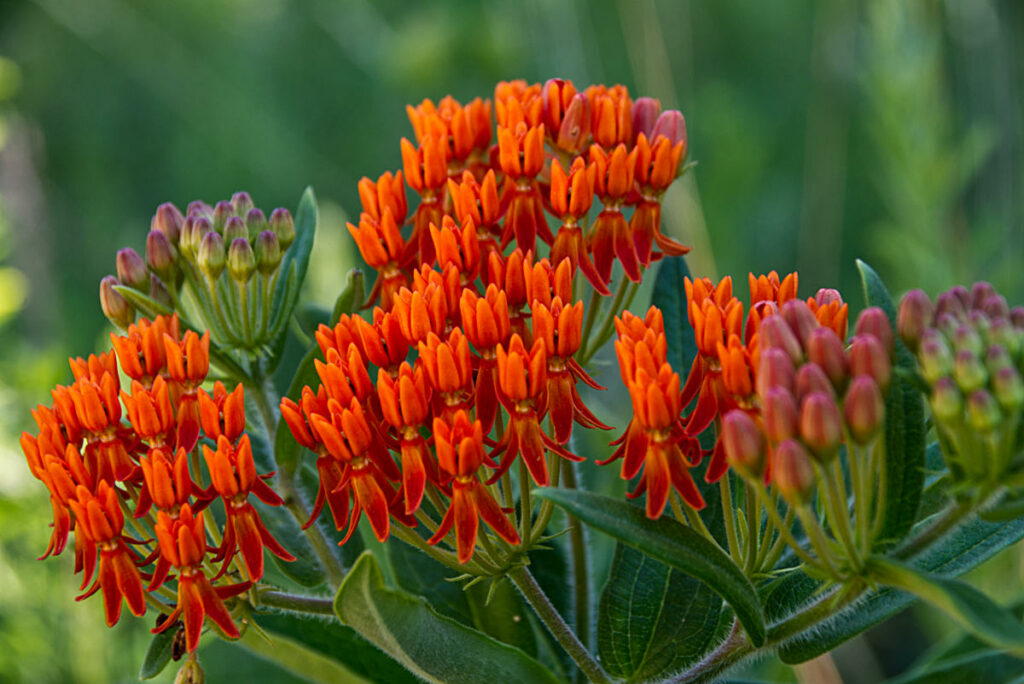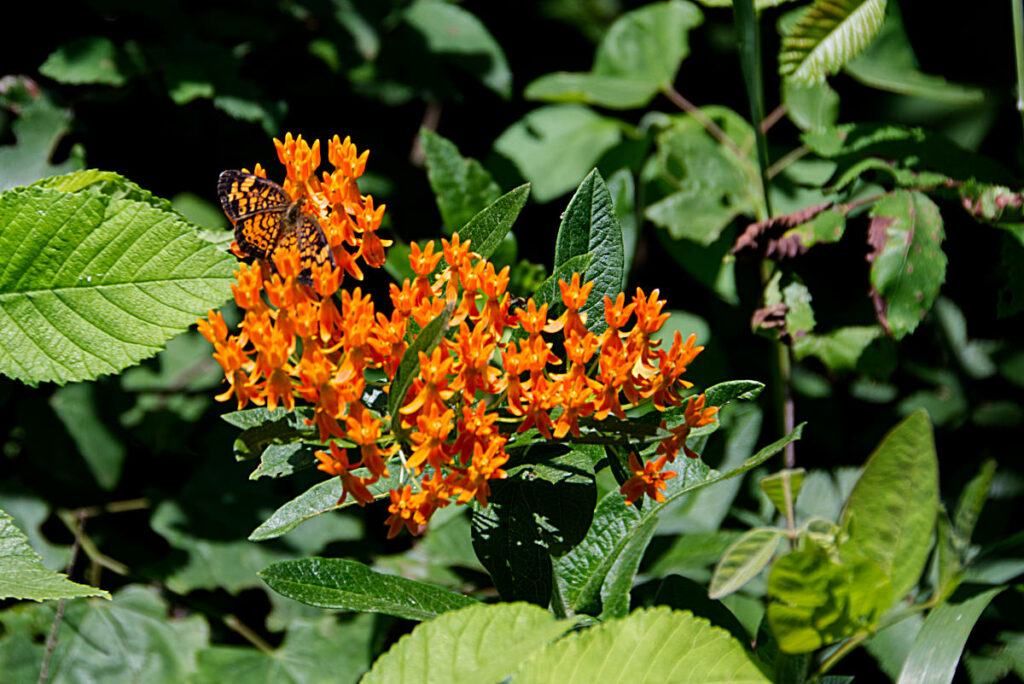
Welcome to the colorful world of Butterfly weed! If you are looking for a vibrant and easy-to-grow flower for your garden, this plant should definitely be on your list. Its bright orange flowers attract bees, butterflies, and hummingbirds, making it a perfect addition to any pollinator-friendly garden. But there’s more to Butterfly weed than just its good looks. In this article, we will explore the benefits of growing Butterfly weed and how to cultivate this beautiful plant in your own backyard. So, whether you’re a seasoned gardener or just starting out, keep reading to discover why Butterfly weed is a must-have for any garden.
Butterfly weed (Asclepias tuberosa) is a plant in the milkweed family that blooms with showy orange flowers during the summer. Butterfly weed is a species of milkweed that is loved by many species of butterflies, including the monarch butterfly.
Let’s take a closer look at this little plant and how it can be planted in your garden to attract butterflies and other pollinator insects. You can get butterfly weed seeds for your garden here.
Butterfly Weed Characteristics
Butterfly weed flowers from May – September, and is generally found east of the Rocky Mountains in the US. It is a short (1-3 ft.) perennial plant with many flowering stems. Although most plants in the milkweed family produce a white milky sap the butterfly weed produces a watery clear sap. The bright orange flower clusters are produced at the ends of the stems, with each cluster being 1-3 inches across.
The leaves of this plant are simple alternating leaves along the hairy stem. These dark green leaves make a dramatic backdrop that sets off the showy orange flowers.
The plant prefers dry open grasslands and rocky meadows. We also commonly find it along roadsides here in the Ozarks. It produces a long woody taproot. This makes the plant hard to propagate by transplanting. However, they are easily grown from seeds after they have been cold-stratified for about 3 months. The easiest way to achieve this is to plant the seeds in the fall. They will easily sprout in the following spring.

Historical Uses of Butterfly Weed
Butterfly weed was commonly used by Native American tribes for food, medicine, and making various items.
Common Uses
Edible parts of this plant are the young stems, flowers, and seeds. They can be cooked just like any other greens. However, there are some precautions if you decide to consume it.
Pregnant women should not eat it because some of the chemicals it contains can act like estrogen in the body which can affect the fetus. This plant contains cardiac glycosides, like other milkweeds, but at lower concentrations. This could cause problems for those taking heart medications or could cause heart rhythm issues if consumed in large quantities.
The fibers from dried stems were used to make various items such as belts and rope.
The woody taproot was used to chew or brew into a tea that was taken internally to treat lung conditions. This is where it got the common name pleurisy root. There have been no scientific studies that validate the use as effective.
The clear sap was also used as a treatment for warts. The stem was broken and the sap was applied to the wart to help remove it from the skin.
Helps Monarch Butterflies
Butterfly weed is also known as butterfly milkweed. This is due to its classification and because monarch butterflies love the bright orange flowers. They lay their eggs on the plant and the larvae eat the leaves and tender young stems.
This plant can be planted in your garden and will not only help attract butterflies and hummingbirds but also tends not to spread aggressively. Buy the seeds here.
For further information on butterfly weed, you can visit this article from the USDA website.
You can find out about many other ways to live naturally and uses for wild natural plants by visiting our list of Natural Living Articles.
FAQs:
Q: What is butterfly weed?
A: It is a plant that is native to North America and is a member of the milkweed family. It is also known as Asclepias tuberosa and produces bright orange flowers.
Q: How tall does butterfly weed grow?
A: It weed can grow up to 3 feet tall.
Q: When does butterfly weed bloom?
A: It blooms in the summer, typically from June to August.
Q: Is butterfly weed easy to grow?
A: It is relatively easy to grow and is a popular choice for gardens and landscaping.
Historical Uses of Butterfly Weed:
Q: What are the historical uses of butterfly weed?
A: It has been used for a variety of purposes throughout history. Native Americans used the roots of butterfly weed to treat respiratory problems, and the plant was also used in traditional medicine to treat snakebites and other ailments.
Common Uses:
Q: What are some common uses of butterfly weed today?
A: It is primarily used as an ornamental plant in gardens and landscaping, as its bright orange flowers are attractive to both humans and pollinators. The plant is also used in some herbal remedies and natural health products.
Q: Can butterfly weed be used in cooking?
A: While it is not typically used in cooking, some people have experimented with using the young shoots and leaves in salads or as a substitute for asparagus.
Helps Monarch Butterflies:
Q: How does butterfly weed help monarch butterflies?
A: Monarch butterflies lay their eggs on milkweed plants, including this one. The caterpillars that hatch from these eggs feed on the leaves of the milkweed plant, including this one. By planting them, individuals can help support monarch butterfly populations by providing a habitat for them to lay their eggs and for the caterpillars to feed on. Additionally, it is an important source of nectar for adult monarch butterflies as they migrate through North America.